Mendoza attracts visitors from around the world to visit its exceptional vineyards and restaurants. We planned our trip visiting Mendoza to try its famous Malbec wine but were also impressed by the charming city and variety of nearby outdoor activities.
Best Thing I Ate This Week
Menú 5 Pasos at Bodega La Azul
Bodega La Azul is located in Valle De Uca, the most famous wine region in Argentina. It is one of the few bodegas in the valley that is owned by an Argentine, and the lunch experience is booked out weeks in advance. Luckily the night before, we were able to secure a table while visiting Mendoza for lunch due to a cancellation and scheduled it to be the last stop on our wine tour of Valle de Uca.

Upon arriving at La Azul, the entire inside and outside of the restaurant was packed with people. A saxophonist was playing requested songs in a beautiful open lawn as people danced nearby in between courses. The 5 courses of the experience included 3 starters (elote, choripan, empanada), 1 main (bondiola), a dessert (flan), and unlimited wine produced on site that was rotated throughout the meal to pair with the courses. Each item was a quintessential Argentine dish but prepared with contemporary techniques and amazing flavors.
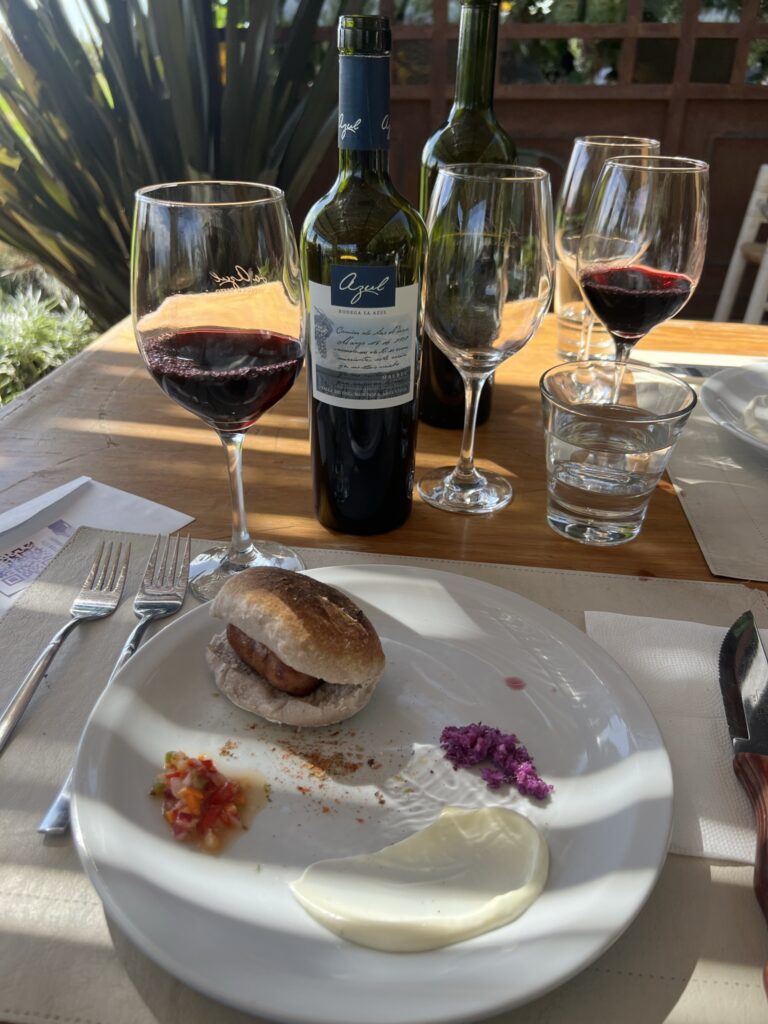

The entire experience was incredible and the one dish that stood out the most was the choripan. The bread of the choripan was made with Malbec produced on-site and tasted unlike any other I had tried previously. The lunch experience ended with a tour of the production facility where the guide took wine directly out of a cask for everyone to sample. It was the perfect way to end our tour of Valle de Uca and complete our anniversary celebration.
An Interesting Fact I Learned
Wine is influenced by soil, grapes, climate, and equipment
The first stop on our wine tour in Valle de Uca was at Bodega Monteviejo, which was recommended to us by a few different people. We had never done a wine tour previously and had limited knowledge about wine production. After passing through the gated entrance to Clos de los Siete (the overarching company that owns the vineyard, we were immediately impressed by the scale of Bodega Monteviejo which we could see in the distance juxtaposed with the incredible Andes behind it.
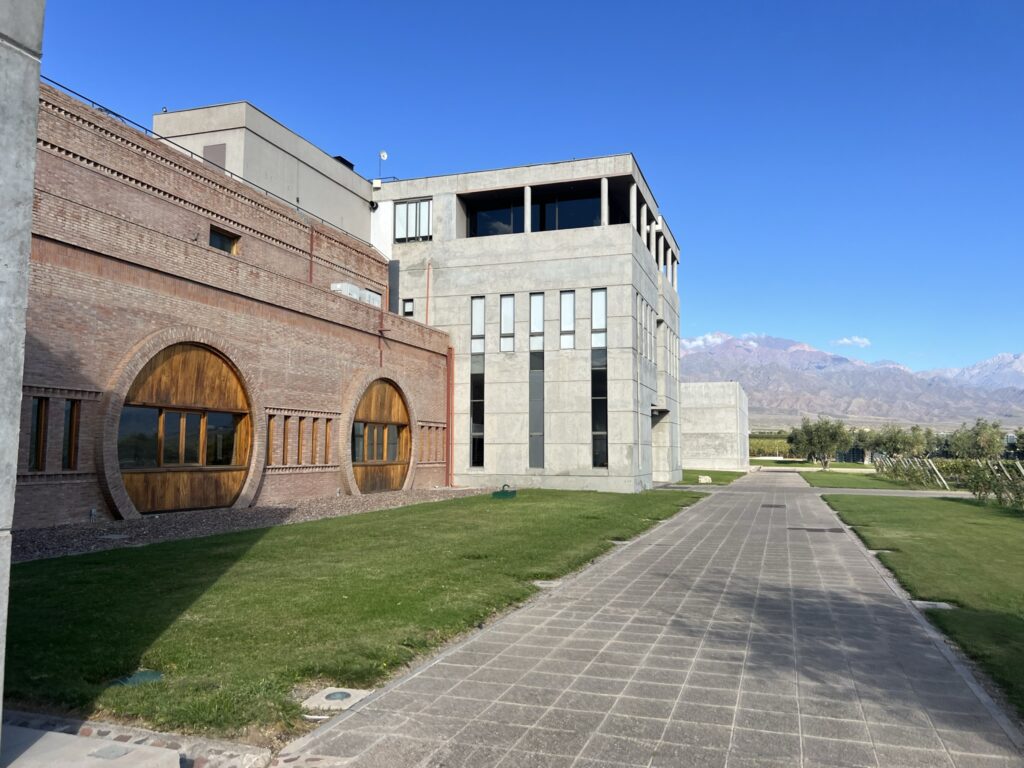
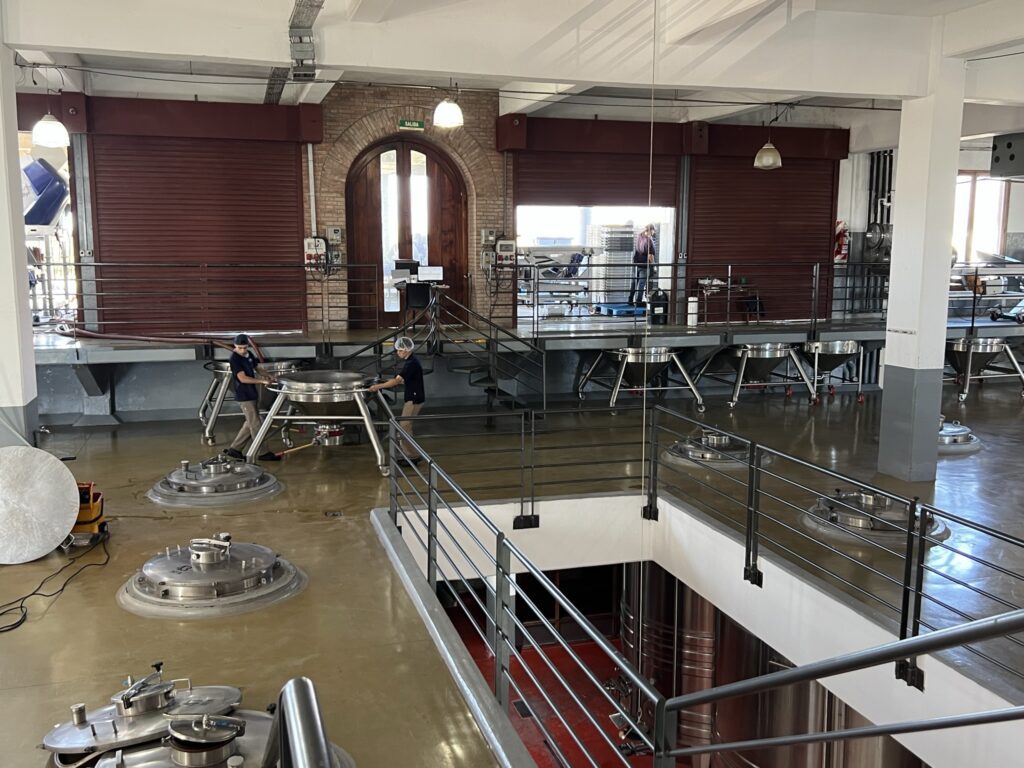
We were greeted by one of the wine experts from the bodega, and he assured us that we would not see anything like Monteviejo during our remaining time in Mendoza. He brought us behind the scenes where we could see the artisanal process that involves people sorting grapes by hand but that has been scaled up to produce wine in such quantities that are exported globally.


During our tour, he shared that the type of the grape relates to the wine type, and the skin of the grape gives the bottle its flavor. Soil is very important to the process and surveys are done on land to determine optimal places to grow the grapes. This is why specific regions around the world have high concentrations of vineyards, while the majority do not. The year on the bottle is important because it provides information about the climate when the grapes were grown. If a season is particularly wet or dry, it will influence the taste. The last important piece of the process is the equipment where the fermentation occurs. This is the only piece that is controllable by a bodega and the most famous ones invest in the most state-of-the-art machines to ensure the utmost quality.
You can read more about the vineyards of Mendoza and setting up your own tasting experience here.
My Travel Tip of the Week
Visit the Andes via Ruta 7 while Visiting Mendoza
During our trip from Santiago on our way to visiting Mendoza we passed over the Andes and were introduced to the incredible scenery on Ruta 7 in Argentina. We were able to catch a glimpse of Cerro Aconcagua, the tallest mountain in the Western Hemisphere and during the descent into Mendoza were so impressed with the scenery that we decided we would like to come back to explore the area if time permitted.

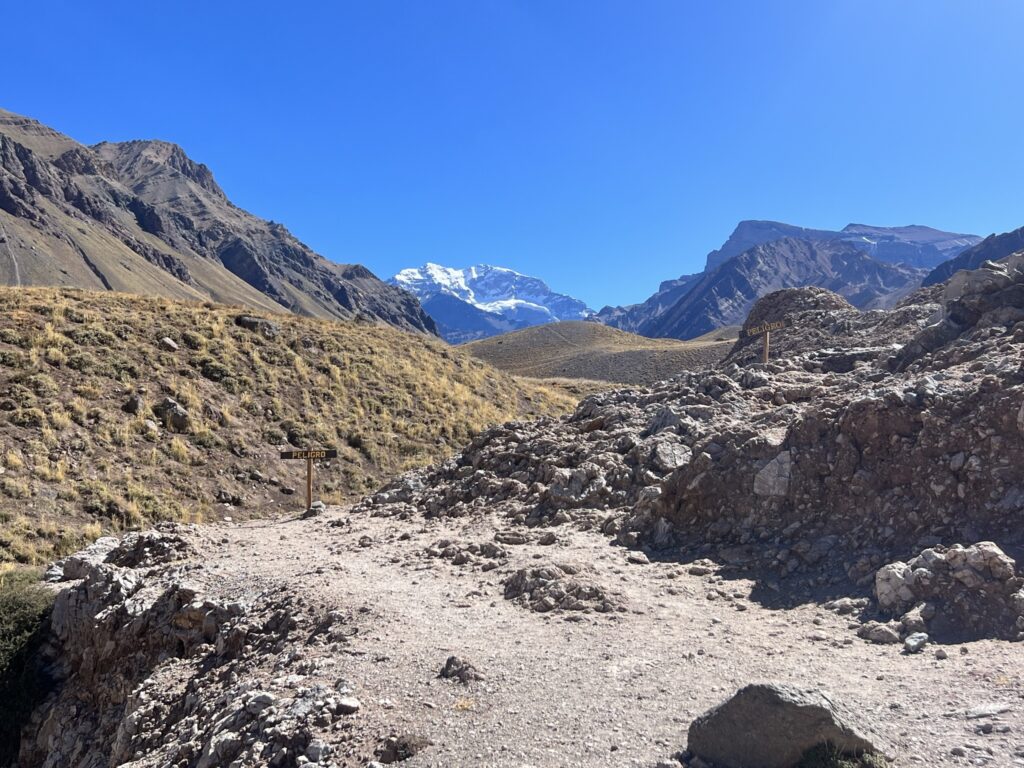
In Mendoza city, there were a handful of tour companies that offered an all-day Alta Montana experience, which was our preference in comparison to renting a car due to some attractions being at the top of windy dirt roads. We had an additional day free and thought a day in the mountains would be a nice change from the wine-related activities. Although the tour was an early start and lasted almost 12 hours, it was well worth it to see the diverse landscapes.

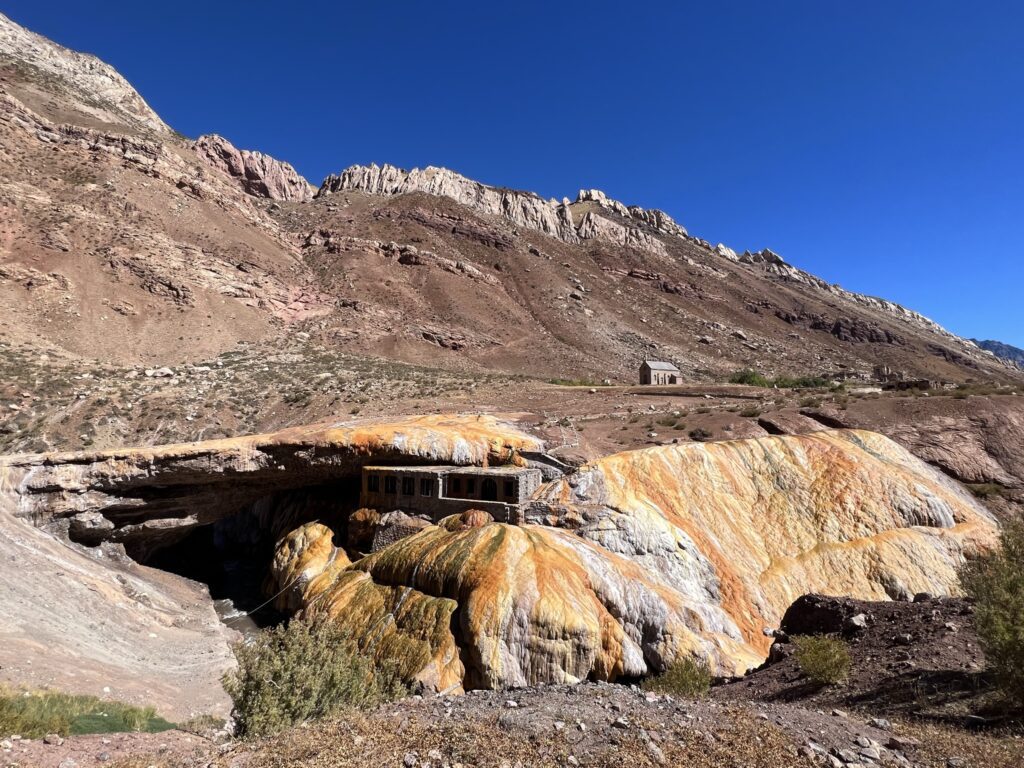
The first impressive stop was Mirador Dique de Potrerillos which was an awesome viewpoint of an important dam for the region’s irrigation, power, and recreational activities. Another interesting stop was at Puente de Picheuta which is a piece of one of the bridges that General Bernardo O’Higgins’ Army used to cross the Andes and liberate Chile from the Spanish in the 1800s. A following stop required a winding ascent to 3,854 meters (12,644 feet) to Cristo de Redentor de los Andes which commemorates the peaceful resolution to a 1904 dispute between Argentina and Chile. The final stop was at Puente del Inca which is a land bridge to hot springs that an Inca Emperor once sent his son to try to heal him in its supposedly cleansing waters. These four stops along with a handful of others are reasons to traverse Ruta 7 while visiting Mendoza.
My Additional Anecdote This Week
Public Green Spaces are Great for Communities
Mendoza City is the regional hub for the provenance of the same name. We decided to base ourselves there during our stay and while walking around town were impressed with how clean it was for being the 4th largest city in the country. One of our favorite features of the center of Mendoza was the 4 small plazas (Espana, Italia, Chile, San Martin) that surround a large central plaza (Independencia). Any time we passed by the plazas people were hanging out on the benches or kids playing in the plazas. We stopped a few times to relax on the benches and enjoy the beautiful fall days. The plazas gave the city a lively energy and a great sense of community.


Just outside of the center of the city was the enormous San Martin Park. Although we didn’t have enough time to explore it in its entirety, we went for a leisurely stroll around its lake. There were so many people of all ages taking advantage of the park to socialize, work out, have picnics, and relax. Both this park and the plazas contributed to a lovely feeling of community while visiting Mendoza city. It made me realize how important public green spaces are and solidified my desire to live close enough to them in the future to be able to take advantage of all they have to offer.


